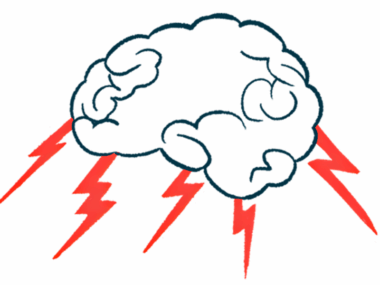Model of brain circuits aims to make DBS more effective for Parkinson’s
Patient given adjustments showed 60% drop in measures of symptom severity
Written by |

By mapping neurological circuits in the brain, an international team of researchers created a model of brain dysfunction that could help to better guide a surgical treatment for Parkinson’s disease and other brain disorders.
Findings were published in Nature Nuroscience, in the study “Mapping dysfunctional circuits in the frontal cortex using deep brain stimulation.”
The brain is packed with millions of nerve cells that are constantly signaling to each other in intricate circuits that ultimately control everything we think and do. In brain disorders like Parkinson’s, these neurological circuits don’t function as intended, leading to disease symptoms.
DBS is given to help ease the severity of Parkinson’s motor symptoms
Deep brain stimulation, or DBS, is a surgical treatment for Parkinson’s that involves placing electrodes in the brain to provide gentle electrical stimulation to specific brain regions. The intent is to activate neurological circuits that aren’t firing properly, thereby helping to ease symptoms. DBS also can be used in other brain disorders, such as dystonia, obsessive-compulsive disorder (OCD), and Tourette’s syndrome.
Though this surgery can be effective, figuring out exactly what type of electrical stimulation achieves the best effect is often a guess-and-check process. Part of the difficulty is that researchers don’t fully understand which neurological circuits are most disrupted in Parkinson’s or other diseases.
Scientists, led by a team in Germany, leveraged data from 534 DBS electrodes implanted in 261 people to learn more. About half of these patients had Parkinson’s, and the rest had the three disorders named above. All had been treated at one of 10 centers worldwide.
Scientists essentially looked at when DBS was effective and when it and was not, and then used findings to build computer simulations of brain activity. Through these simulations, the scientists were able to pinpoint the specific circuits that provided the best results when activated by DBS — which implies that dysfunction in these circuits is a major driver of patient symptoms.
In three patients — one with Parkinson’s and two with OCD — the scientists showed how they could leverage these insights to improve DBS. The Parkinson’s patient, a 67-year-old man with severe disease motor symptoms, showed a 60% decrease in measures of symptom severity three months adjustments based on the model, the study reported.
Comparable improvements were seen in the OCD patients, suggesting a model could help guide DBS in clinical practice.
“We plan to refine this technique and zero in even more precisely on dysfunctional brain circuits for specific symptoms,” Ningfei Li, PhD, a study co-author at Charité Universitätsmedizin Berlin, said in a university press release. “For example, we could isolate the circuits involved in obsessions or compulsions in OCD, or other comorbid symptoms commonly found in these patients, like depression and anxiety disorders, to individualize treatment further.”
‘Partial overlap’ seen with brain circuits affected in differing disorders
Researchers noted that, while the specific circuits varied between Parkinson’s and other disorders, there was some overlap among the different conditions.
“The circuits we identified partially overlapped, which to us implies that the malfunctions reflected in the symptoms studied are not wholly independent from each other,” said Barbara Hollunder, a PhD fellow at the Einstein Center for Neurosciences in Germany and the study’s first author.
The scientists termed their models of dysfunctional circuits the “dysfunctome.” In scientific jargon, the suffix “-ome” is added to indicate the study of something at a comprehensive, global level.
“As a method, this approach is capable of mapping what we term the human ‘dysfunctome’— that is, the sets of connections that are disrupted and malfunctioning across different brain disorders,” they wrote.
Although the model is currently limited to just a few diseases, the researchers hope to use this model as a framework for better understanding brain dysfunction across a vast spectrum of conditions.
“One day, we hope the dysfunctome will describe the entirety of brain circuits that may typically become dysfunctional as a result of network disorders,” Hollunder said.





